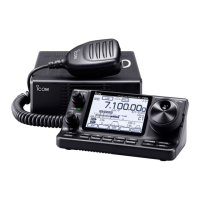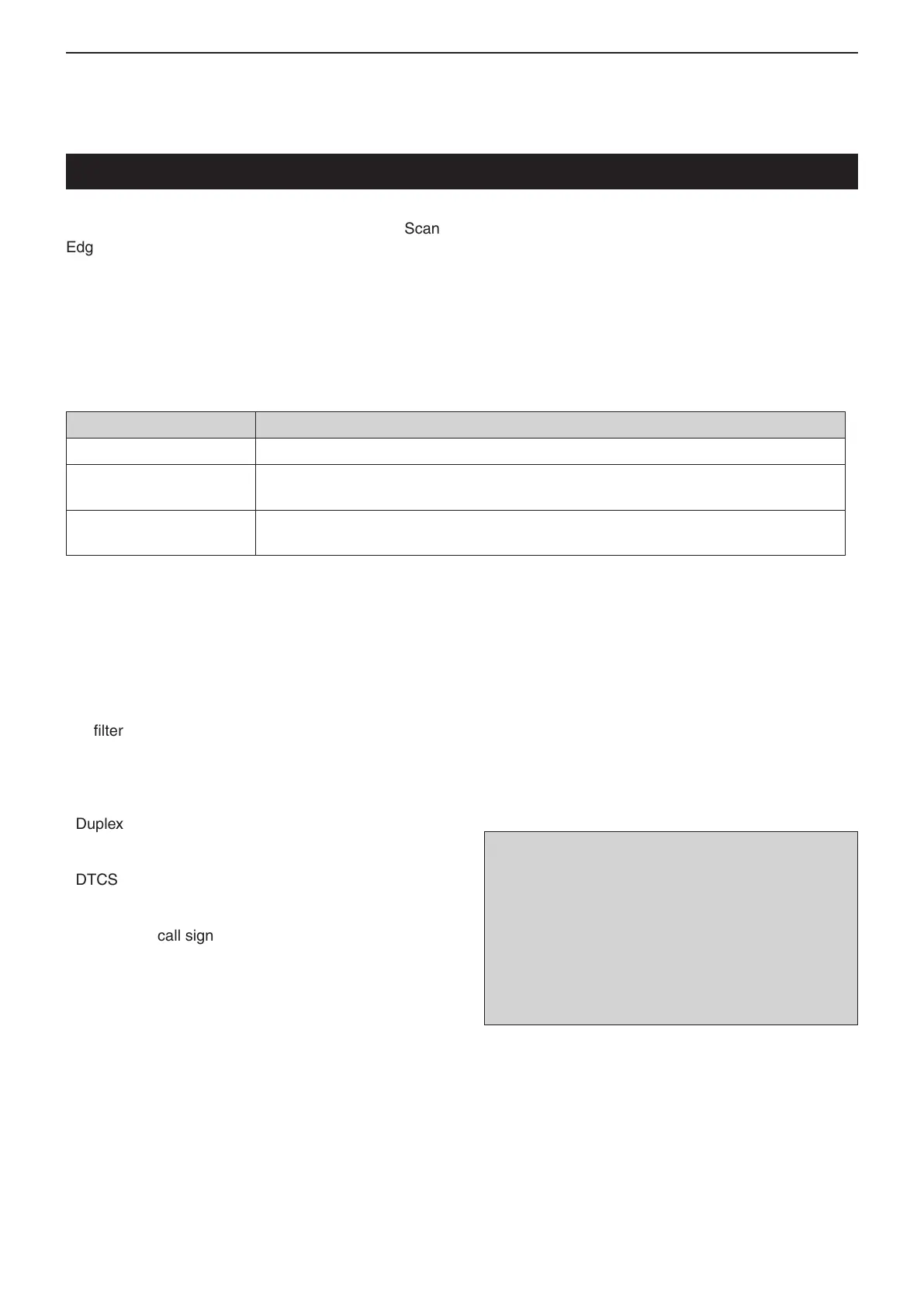11
MEMORY OPERATION
11-2
The transceiver has a total of 495 Memory channels (99
channels in each of 5 memory banks, A to E), 6 Scan
Edge channels (3 pairs) and two Call channels (C1/C2)
each for the 144 and 430 MHz frequency bands.
The Memory mode is useful to quickly select often-
used frequencies.
While in the memory mode, all 505 Memory channels
are tunable, which means the programmed frequency
can be temporarily tuned with the Dial.
When you tune a Memory channel without storing, and
then go back to the channel again, the original stored
frequency is displayed.
In the Memory mode, touch just above MHz area on
the display, and then select the desired band. Then ro-
tate the Dial to select the frequency to be stored.
Memory Channels Descriptions
1–99 (Total of 495) Regular Memory channels with split frequency capability.
1A/1B–3A/3B
Program Scan Edge Memory channels with only simplex capability.
Stores the Scan Edge frequencies for programmed scans.
C1/C2
Two Call channels (C1/C2) each for the 144 and 430 MHz frequency bands.
Call channel with split frequency capability. Instantly recalls a specified frequency.
D Memory channel contents
The following information can be programmed into
Memory channels:
• Operating frequency (p. 3-7)
• Operating mode (p. 3-17)
• IF lter number (p. 5-6)
• Split data (p. 6-8)
( Usable only on the regular Memory channels and
Call channels.)
• Memory name (p. 11-10)
• Duplex direction (DUP+ or DUP–) and frequency off-
set (p. 4-25)
• Subaudible tone encoder (p. 4-26), tone squelch or
DTCS squelch ON/OFF (pp. 4-22, 4-23)
• Subaudible tone frequency (p. 4-26), tone squelch fre-
quency or DTCS code with polarity (pp. 4-22, 4-23)
• Destination call sign (p. 9-45)
• R1/R2 call signs (p. 9-26)
• Call sign squelch or Digital code squelch ON/OFF
(p. 9-22)
• Digital code (p. 9-22)
NOTE:
Memory content can be erased by static electricity,
electric transients, and other causes. In addition, they
can be erased by a malfunction or during repairs.
Therefore, we recommend that you backup the mem-
ory content or save it to an SD card or to a PC.
• The SD card is not available from Icom. Purchase an
SD card to meet your needs.
• The optional CS-7100 c l o n i n g s o f t w a r e can also
be used to backup your memory data.
General description

